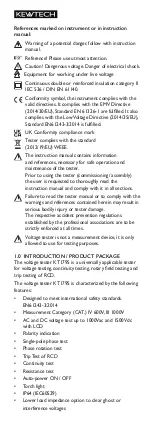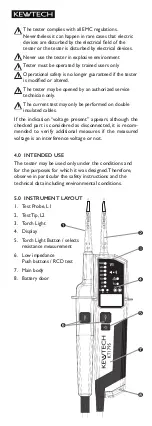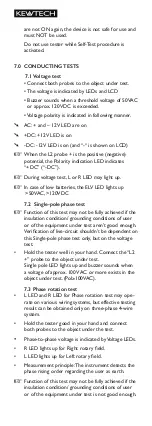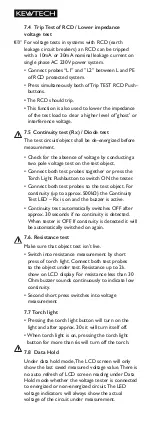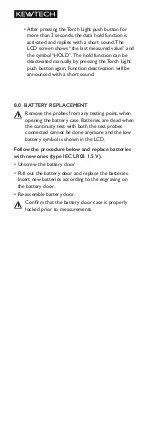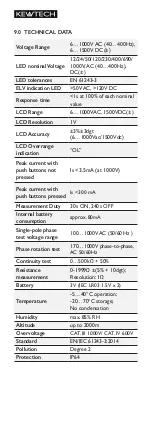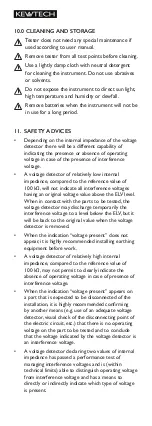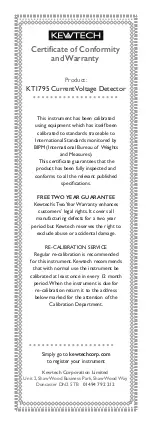
10.0 CLEANING AND STORAGE
Tester does not need any special maintenance if
used according to user manual.
Remove tester from all test points before cleaning.
Use a lightly damp cloth with neutral detergent
for cleaning the instrument. Do not use abrasives
or solvents.
Do not expose the instrument to direct sun light,
high temperature and humidity or dewfall.
Remove batteries when the instrument will not be
in use for a long period.
11. SAFETY ADVICES
•
Depending on the internal impedance of the voltage
detector there will be a different capability of
indicating the presence or absence of operating
voltage in case of the presence of interference
voltage.
•
A voltage detector of relatively low internal
impedance, compared to the reference value of
100 k�, will not indicate all interference voltages
having an original voltage value above the ELV level.
When in contact with the parts to be tested, the
voltage detector may discharge temporarily the
interference voltage to a level below the ELV, but it
will be back to the original value when the voltage
detector is removed.
•
When the indication “voltage present” does not
appear, it is highly recommended installing earthing
equipment before work.
•
A voltage detector of relatively high internal
impedance, compared to the reference value of
100 k�, may not permit to clearly indicate the
absence of operating voltage in case of presence of
interference voltage.
•
When the indication “voltage present” appears on
a part that is expected to be disconnected of the
installation, it is highly recommended confirming
by another means (e.g. use of an adequate voltage
detector, visual check of the disconnecting point of
the electric circuit, etc.) that there is no operating
voltage on the part to be tested and to conclude
that the voltage indicated by the voltage detector is
an interference voltage.
•
A voltage detector declaring two values of internal
impedance has passed a performance test of
managing interference voltages and is (within
technical limits) able to distinguish operating voltage
from interference voltage and has a means to
directly or indirectly indicate which type of voltage
is present.



